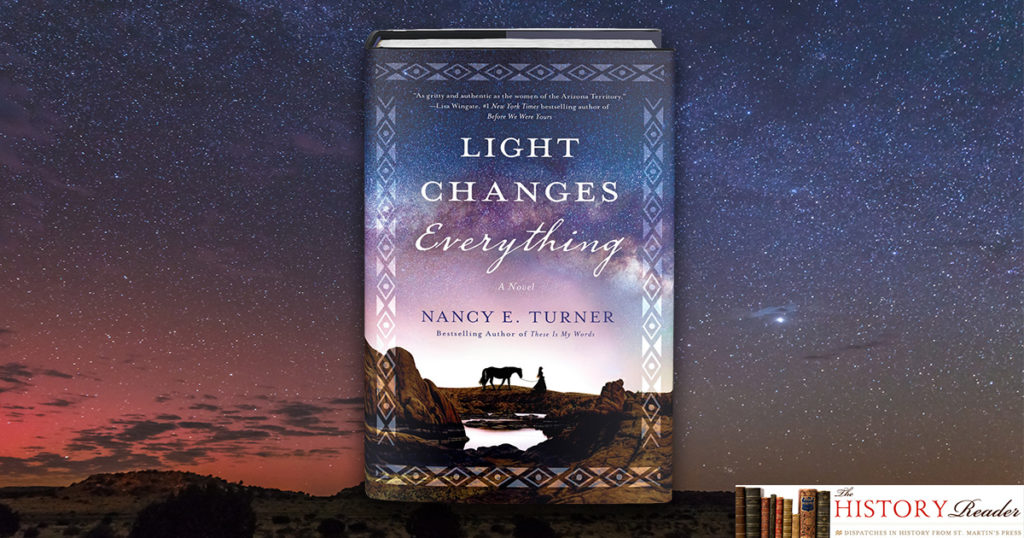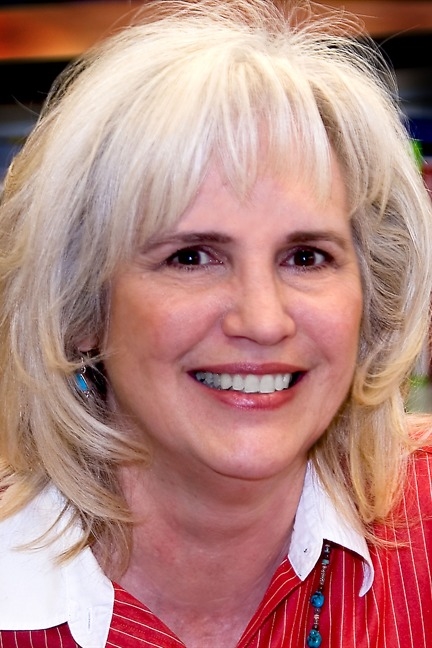Setting the Scene: Arizona in the Early 20th Century
by Nancy E. Turner
Nancy E. Turner discusses her latest novel, Light Changes Everything, highlighting how the history and setting of Arizona in the early 1900s played into her character creation and development.

There should be a plate on every non-fiction book stating Things are not what they seem. Digging for facts can be a rabbit run through a jungle of information, more than will ever come to light in a novel. No matter how much granite fact you find, a novel is the tip of the iceberg of research, yet it still doesn’t put a complexion on a face, a smell of the local mud, the soft squeak of saddle leather, nor the ache of longing in a human heart. In telling a fictional story which plays out upon a very real historical stage, another signpost should warn, Keep it real.
Key to my research is always being there, physically, in person. It’s imperative to know a swamp in New England is not the same swamp in Louisiana. The Arizona desert is not the Sahara, nor is it Death Valley, for Arizona teems with life. True, not all of that life is compatible with human life, as snakes, spiders, poisonous lizards, and scorpions own the place, while we are the interlopers. Likewise, the plants defend themselves with every kind of thorn, poison, and mold. In historical writing, the setting becomes more of a character than it is a backdrop. The terrain and the weather can keenly affect the actions of the fictional characters, especially in a place as vivid as Southern Arizona.

Author: Joe Parks (November 23, 2012)
This file is licensed under the Creative Commons Attribution 2.0 Generic license.
In my newest novel, the main character, Mary Pearl Prine, crosses the country by train from her home in the dry, cactus-covered land of Southern Arizona, leaving behind smell of creosote bush and clay burned under a harsh sun, to Illinois during late summer when the corn is ready to harvest and the air is laden with pollen. The rolling hills are damp with rain, and green, and trees grow huge in diameter and height. Crooked palo verde trees, stunted by drought and broken by wind are nowhere to be seen. In moving to Illinois the homey dust she’s known and never considered a hardship has been taken over by land that seems to grow anything, and yet the lush green is laid bare by November’s chill. Snow has a smell. If you’ve always been in it, you may not notice, but to this Southwestern author, Illinois’ snow has a smell, unlike Arizona snow.
For me to envision my character as a college student in Illinois took quite a stretch. Although there was a University in Tucson, it offered classes for men in mining or agriculture. Plus, because there were no high schools as we think of them, the average age of a student in 1907 was fourteen, and the “older” girls, meaning seventeen and above, had the task of helping the younger students with laundry. In the early days, there were more students in the preparatory department than in the University proper, and the number of University graduates was never more than ten a year. Wheaton College in Illinois was founded in 1834 as a female seminary and in 1906, it was the only institution of higher learning in this country to openly recruit female and African American students. It was coeducational, and among its earlier graduates are many notables.
John Wesley Powell, son of an itinerant preacher, studied there when it was called Illinois College, working his way through school while also teaching school. The load was great and he did not graduate, but he traveled this country, often on foot, and even after losing his right hand, explored the Grand Canyon (see Down the Great Unknown: John Wesley Powell’s 1869 Journey of Discovery and Tragedy Through the Grand Canyon by Edward Dolnick).
Harold Lee Alden received a Bachelor of Arts from Wheaton College in 1912 and his master’s from the University of Chicago in 1913. After earning a PhD he worked for twenty years at the Yale Observatory in South Africa before returning to the University of Virginia. The crater Alden on the far side of the Moon is named in his honor.
Juanita Breckenridge Bates was an American Congregationalist minister. She was educated at Rock Island High School, and received a bachelor of science from Wheaton College. She was the first woman to be awarded a Bachelor of Divinity degree from Oberlin College Theological Seminary (1891). For decades, she was a staunch voice of the women’s suffrage movement.
The decade before being granted Statehood in 1912, Arizona was torn apart with tumult. Germany had been smuggling arms and soldiers across the border of Arizona into Mexico for years, getting ready to stage a vast attack on America at her southern border. All they had to do was overthrow the Mexican president, Porfirio Diaz, put their own man in his place, and they’d have us! However, the assassination of Diaz created a storm that could not be contained, which erupted by 1910 into the Mexican Revolution. Fully armed and with an alternate agenda, angry farmers took measures; Pancho Villa organized a gang.
When the German army left to return to their own country and start a war there, the political climate of Southern Arizona descended into utter chaos. Kidnapping was rampant as a way to finance trade, and bandits ruled every road, while the Arizona Rangers, hopelessly undermanned, tried to chase down criminals. If their trade was honest, every rancher north and south of the border did what they could by hiring gun hands along with cowhands. Justice was what you made it.
Arizonans knew of places “back east” where civilization seemed to have taken hold. Men believed statehood would bring law and order, courts, jails for murderers and cattle thieves – or perhaps a long drop on a short rope – but at least it would be done according to statute, with legal defense, with judges and juries. Many Arizona women of the era were not so sure. Only in the territories of Arizona and New Mexico was a woman still free under centuries-old Napoleonic/Mexican parish law, to own property, run a business, claim her own land, and be her own boss. Even though Arizona didn’t let women vote until 1920, it was statehood that confined her to the corset-wearing, quiet-voiced submissiveness expected of her Eastern sisters. My female characters had never known a world in which a woman couldn’t own a ranch and give orders to a man without deferring to a husband or guardian simply because he wore pants. For Mary Pearl to pack her pistols and take off to a “ladies’ seminary” in Wheaton, Illinois, was a step onto a strange world, and her confidence that she’d be a match for all challengers comes up against society from the first moment she steps off the train.

Nancy E. Turner was born in Dallas, Texas, and currently resides in Pinetop, Arizona with her husband, John. She started college when her children were full-grown. With a degree in fine arts from the University of Arizona with a triple major in creative writing, music, and studio art, Turner went on to become the bestselling author of many novels including These Is My Words, Sarah’s Quilt, and The Star Garden.
No comments:
Post a Comment